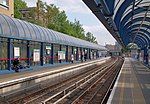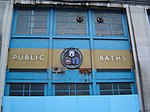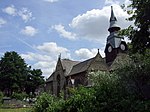East India Dock Road
A13 road (England)Canning TownLimehousePoplar, LondonStreets in the London Borough of Newham ... and 1 more
Streets in the London Borough of Tower Hamlets

East India Dock Road is a major arterial route from Limehouse to Canning Town in London. The road takes its name from the former East India Docks in the Port of London, and partly serves as the high street of Poplar. To the west it becomes Commercial Road and to the east Newham Way. It forms part of the A13, a major road connecting the historic City of London to Tilbury and Southend.
Excerpt from the Wikipedia article East India Dock Road (License: CC BY-SA 3.0, Authors, Images).East India Dock Road
East India Dock Road, London Poplar
Geographical coordinates (GPS) Address Nearby Places Show on map
Geographical coordinates (GPS)
| Latitude | Longitude |
|---|---|
| N 51.511230555556 ° | E -0.012611111111111 ° |
Address
East India Dock Road
East India Dock Road
E14 0EH London, Poplar
England, United Kingdom
Open on Google Maps







